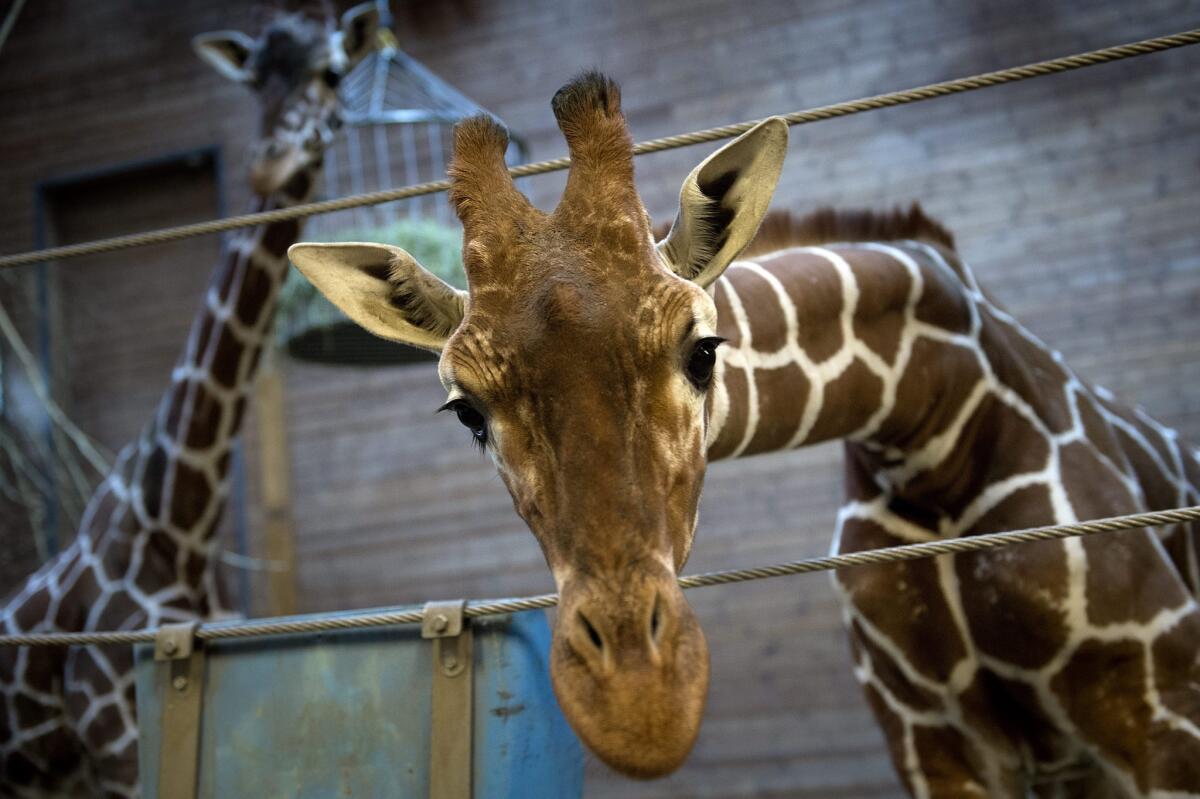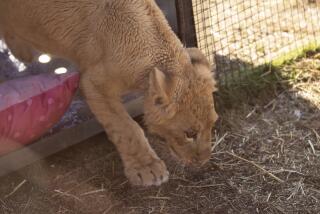What the Copenhagen Zoo forgot: Zoos should save, not kill

- Share via
The killing of a young giraffe at a Danish zoo — after which it was publicly butchered and fed to a lion — breaks what should be the most inviolate if unwritten contract when humans remove wild animals from their natural habitat: to protect and keep healthy those animals and their descendants.
A spokesman for the Copenhagen Zoo said the killing with a bolt gun of the 2-year-old giraffe was done to prevent inbreeding of the zoo’s population. The zoo brushed off other options, such as giving the animal to another willing zoo (and there were several) or keeping it in a separate enclosure so that it would not breed. The zoo said it needed that space for more genetically useful animals.
The action, and the explanation, cast a harsh spotlight on the role of zoos, a role that is increasingly being questioned as we learn more about wild animals and their difficulties in captivity. Humans love zoos, and have for thousands of years. They entertain, delight and educate children and adults alike. But in recent years it has become clear that neither entertainment nor even education are enough; humans have weighty responsibilities that go with removing animals from the wild and putting them on display. Killer whales, which in the wild form close family bonds and travel long distances, clearly were not meant for life as captive performers. These days, we can see how inhumane the old elephant enclosures were. We have yet to determine whether the newer style of exhibits — larger, with softer ground and more stimulating activities for the elephants — will do right by them. Animal protection, and the restoration of critically endangered species, have taken a more important role in the mission of zoos.
More than ever, zoos are taking responsibility for the well-being of their animals, which means keeping them alive and healthy as long as possible. That’s not what happened here. And what lesson does it teach the public about respecting and admiring wild animals when that education includes the killing and dismemberment of an animal?
Of course, the zoo’s lions weren’t about to turn into herbivores if they weren’t fed giraffe meat; another animal would have died instead. But there is a difference between a zoo’s responsibility toward domesticated animals, long raised for meat, and the commitment it should make toward its wild animals. The wilderness is a harsh place too, but at least the giraffe would have had a chance of escaping its predators there, rather than having its arbitrary death chosen for it.
More to Read
A cure for the common opinion
Get thought-provoking perspectives with our weekly newsletter.
You may occasionally receive promotional content from the Los Angeles Times.










